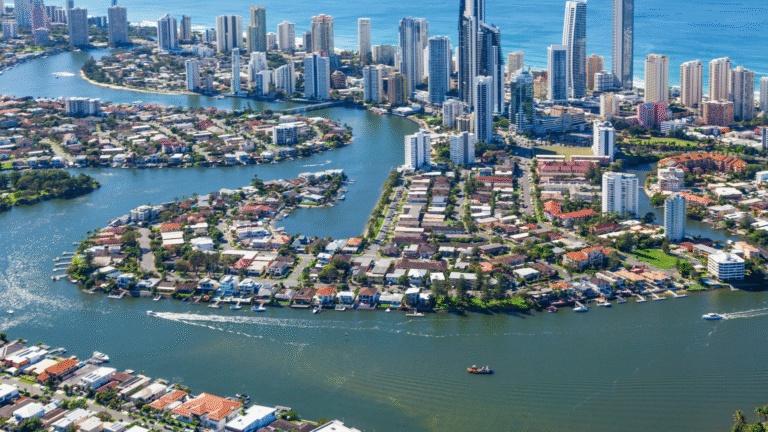If you’re planning a road trip around Australia in an electric vehicle, the experience at tourist hotspots often shapes whether that trip feels effortless or stressful. Successful tourist charging does more than add kilowatts — it supports local businesses, reduces congestion at chargers, and reassures visitors they can explore without range anxiety. But not every installation hits the mark. This article breaks down what’s working at popular destinations, what isn’t, and practical steps for operators and travellers to improve the experience.
Table of Contents
- Why tourist charging matters
- What’s working: successful models and features
- What’s not working: common problems at hotspots
- Practical solutions for hosts and councils
- How travellers can prepare for hotspot charging
- Case examples (typical Australian scenarios)
- FAQs
- Conclusion
1. Why tourist charging matters
Tourist hotspots are high-value locations for charging networks: visitors stay longer, local businesses benefit when people linger, and positive charging experiences encourage repeat tourism. Well-planned chargers also help decentralise demand from urban hubs and create tourism corridors that make regional travel by EV a realistic choice.
2. What’s working: successful models and features
a) Destination chargers at accommodation and attractions
Slow-to-moderate AC chargers (7–22 kW) installed at motels, caravan parks and tourist attractions are ideal because visitors typically park for hours. These units extend range naturally while guests eat, walk trails or sleep.
b) Reliable DC fast charging at gateway towns
Fast chargers (50–350 kW) located at town entrances or popular service stops make road-trip legs feasible. Placing at least one reliable fast-charger within 100–150 km of a hotspot is a practical rule of thumb.
c) Clear signage and real-time availability
Signage on major approaches that shows charger location and type, plus live availability on apps, transforms ad-hoc searches into confident planning. Tourism boards that publish charger maps see better adoption.
d) Integration with local businesses
When cafes, pubs or visitor centres host chargers, owners benefit from longer dwell time and increased spending. Co-funded installations where the host provides site access and the network covers equipment work well.
e) Payment simplicity and interoperability
Single-sign-on payment, tap-to-charge or widely accepted network cards reduce friction. Tourists won’t spend time wrestling with multiple apps and accounts.
3. What’s not working: common problems at hotspots
a) Too few ports and high ICEing rates
Many carparks install a couple of chargers and quickly find them blocked or occupied by non-EVs — or simply insufficient for peak seasons.
b) Poor charger reliability and maintenance
Broken chargers or offline sites are common frustrations. Remote sites with unreliable backhaul or poor maintenance contracts can make chargers unusable for days.
c) Too many slow chargers where fast is needed (and vice versa)
Placing only Level 2 chargers at strategic highway stops is a missed opportunity; conversely, fast chargers at overnight-only locations underutilise investment.
d) Inadequate power supply planning
Some locations suffer frequent trips or have unstable supply; without upstream work to the grid, chargers can’t reach advertised speeds.
e) Complex user flows and poor information
If tourists must register multiple apps, wait for verification texts, or use obscure payment methods, uptake suffers.
4. Practical solutions for hosts and councils
a) Right-sizing infrastructure
Match charger type to dwell time. Overnight accommodation → AC chargers; gateway service centres → DC fast chargers; sightseeing hotspots → a mix.
b) Improve enforcement and design to reduce ICEing
Clear marking, kerbs, camera signage, and active education reduce misuse. Some hosts use short maximum sessions to encourage turnover.
c) Invest in reliability and remote monitoring
Contracts with robust SLAs, remote health monitoring and rapid-response maintenance teams keep uptime high.
d) Community partnerships and funding mixes
Grants plus host contributions often unlock projects. Tourist associations, local councils and private operators can co-fund and co-promote installations.
e) Smart power management & renewables pairing
Load management, battery storage and solar can reduce grid upgrade needs and lower running costs for hosts.
5. How travellers can prepare for hotspot charging
- Plan around dwell time: use destination chargers when you’ll stay 1–6+ hours.
- Check live availability on apps before diverting.
- Carry adapters and multiple charging networks’ accounts or RFID cards for flexibility.
- Book EV-friendly accommodation in high season; ask hosts about charging type and speed.
- Have a backup charging stop plotted — especially in remote regions.
6. Case examples (typical Australian scenarios)
- Coastal tourist town: Works best when local caravan parks offer 7 kW chargers and a town-centre fast charger handles day visitors.
- National park gateway: A single fast charger often becomes a bottleneck in peak season — doubling capacity or adding AC chargers spreads demand.
- Island or remote attractions: Solar-plus-storage with a moderate AC charger gives reliable top-ups and keeps diesel gensets out of the picture.
FAQs
Q: Are destination chargers enough for road-trippers?
A: They help a lot but need to be combined with fast chargers on corridors for longer legs. Destination chargers are perfect for overnight and multi-hour stops.
Q: How can small towns afford fast chargers?
A: Funding mixes (state grants, tourism levies, private operators) and shared revenue models can make them viable.
Q: What’s the number-one traveler tip?
A: Always confirm charger availability and type with your accommodation before booking during peak season.
Conclusion
Well-placed, reliable and user-friendly charging transforms tourist hotspots from EV pain points into travel enablers. The winning approach pairs the right charger type with the site’s typical dwell time, invests in reliability and maintenance, and integrates chargers into the local visitor economy. For travellers, good planning and flexibility turn potential frustrations into straightforward top-ups — and for hosts, charging is a real tourism asset when executed thoughtfully.
Meta Description: Discover what works (and what doesn’t) for EV charging at tourist hotspots in Australia — from destination chargers and fast-charger placement to maintenance, signage and traveller tips.
